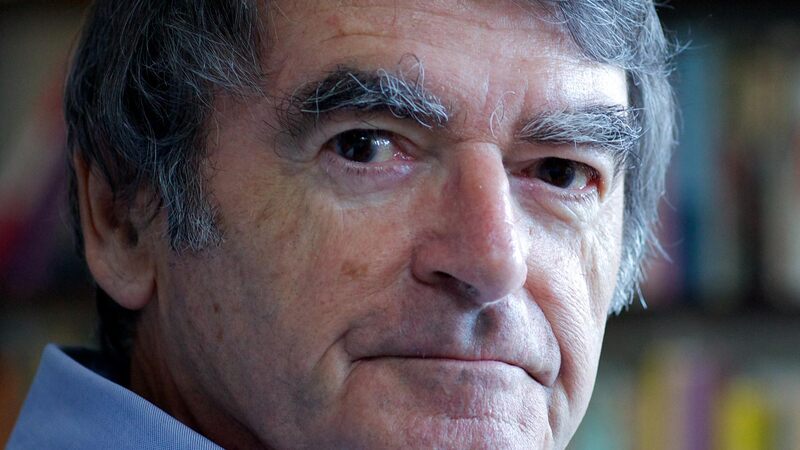You are viewing your 1 free article this month. Login to read more articles.
Kindle: a decade of publishing's game-changer
The advent of the Kindle e-reader 10 years ago has had a “dramatic” and lasting impact on the publishing industry, but while the disruption has been “fundamentally good” for the trade, it has not been without its casualties, chief executives have reflected.
A decade on from the launch of Amazon’s first e-reader in the US in 2007 - a “transformative milestone” in the book world, reckons Penguin Random House UK chief Tom Weldon - publishers are united in their agreement it has had a positive influence on the book world by widening the market, leading to the creation of new companies, improving the quality of the printed book and ultimately forcing everyone in the trade to up their game. But the creation also compounded the pressure on bricks-and-mortar bookshops, which were already faced with rising business rates, declining high streets, economic recession and competition from online retailers. The number of indie booksellers in the UK has almost halved in the past 11 years - from 1,535 in 2005, to 894 in 2016.
Pan Macmillan managing director Anthony Forbes Watson was adamant that the Kindle has been a “fundamentally good thing for reading. We were disrupted and challenged by the Kindle, it made us think about authors and readers and made us think about our role,” he said.
Its creation has had a lasting impact on the way publishing houses operate, still keenly felt today. “I see the time when publishers didn’t have Amazon or Kindle to think about as like the time when no one went to the gym,” Forbes Watson said. “Now we spend hours getting fitter in the gym... It provides the same function, in many ways. It has been a brilliant disruptor [that] came in from beyond the publishing bubble.”
When Amazon launched its Kindle in the US in 2007, bringing it over to the UK in 2010, its long-term mission was to enable customers to download any book in any language in under 60 seconds. At launch the device’s inventory offered 90,000 titles to customers; it now has over five million. But the e-commerce giant’s disruption did not stop there. It went on to to create new business models and routes to market for e-books at a pace which often delighted and alarmed publishers in equal measure. High among such creations was its self-publishing platform Kindle Direct Publishing (KDP), which enabled authors to bypass traditional publishing houses and often earn higher royalties (of up to 70%) releasing their work directly through Amazon, thus cutting publishers out of a piece of the new, emerging e-book market. Amazon said that of the titles to have charted in its Kindle Top 100 on average around 25% are published independently via KDP.
Other inventions to rock the industry’s once steady boat were Kindle Singles, a selection of shorter titles of 10,000–30,000 words published and sold by Amazon for “much less” than typical books, a format utilised by high-profile names such as Susan Hill, John le Carré and Gloria Steinem. Another is Kindle Unlimited, a monthly subscription service for e-books and audiobooks which, when it first launched, caused some publishers to consult lawyers after their titles were included in the service against their wishes.
The Kindle’s early entry into the market enabled Amazon to suck up market share, seeing off competitors Sony, eBooks by Sainsbury’s and blinkboxbooks, now all closed, and consigning Apple and Kobo to a fraction of the UK market. Kindle’s current share of UK e-book sales is estimated to be 90%.
Meanwhile, the surge in popularity of digital books compounded the pressure on bricks-and-mortar bookshops who were unable to effectively sell e-books and found it hard to compete with Amazon’s heavily discounted prices. At one point in 2012, the retailer was selling key frontlist titles for 20p, matching a Sony promotion, leading to grave concerns about the long-term impact of the devaluation of books. As Ian Chapman, chief executive of Simon & Schuster UK, said: “The effect [of the Kindle] was dramatic: people talked of the death of the physical book, the death of bricks-and-mortar booksellers, and debated endlessly the percentages that this new, unruly child stole from the traditions of our parents.”
But the innovations also provided many benefits to the trade. As PFD chief executive Caroline Michel noted, the Kindle helped to “grow the market worldwide in the English-speaking world”, where it had its greatest impact. Profile Books founder Andrew Franklin agreed. “We’re all selling more books,” he said. “Kindle has helped with net growth in the market, and it’s now easier to order books.” However, Franklin conceded that the industry had seen “consolidation of the high street, and the loss of indie [booksellers]” as a result, which he said had been “hard for everyone”.
KDP has provided another way for publishers to source talent and it has also led to a wave of new digital-first start-ups, from Head of Zeus, Canelo and Endeavour Press, to Bookouture (recently acquired by Hachette). The latter’s founder, Oliver Rhodes, said: “From our point of view, there might not have been a Bookouture without the launch of the Kindle. It has changed the industry for the better. There’s simply more choice available now to readers.”
Iain Millar, m.d. of Canelo, added: “It’s fair to say that without Kindle there wouldn’t be a Canelo, so it has changed the lives of all who work here and probably those of everyone we publish... In short, Kindle been a game-changer in every sense of the word.” For Forbes Watson, the device has made it easier for readers to discover authors, through its one-click purchase button, sampling tools and digital marketing. “The e-book engages in real time, it reflects market response, marketing and metadata,” he said. “It has created a market-responsive context.”
Adding physical value
Many in the trade also credited the device with upping the production quality of physical books and making them more attractive to readers faced with a choice between that and a cheaper digital rival, which has benefited bricks-and-mortar bookshops. “To justify to consumers their often higher price, publishers have been spurred on to publish with ever more imaginative jackets and production values... All have combined to make the physical book a thing of beauty, of value to cherish and keep,” Chapman said.
Tim Godfray, c.e.o. of the Booksellers Association, said publishers' investment in making physical books more beautiful had resulted in customers returning to the printed product. "When the Kindle launched ten years ago, it seemed to be not only a game changer, but a device - underpinned by an organisation with huge resource - which had the potential to destroy the printed book, bookshops, and the book world as we know it," Godfray said. "Thankfully, that hasn’t happened.
“The last five years has seen a resurgence in books as physical artefacts….Consumers have come back to printed books – and publishers have worked really hard on the production side to make books even more appealing. Digital reading and digital books have their place and dominate certain genres; but the book is here to stay.”
While at one point e-book sales looked set to overtake print sales, many publishing chiefs now believe the digital market is levelling off, or even contracting, for traditional publishers. Their views are supported by data from Nielsen’s Books and the Consumer survey, which estimates e-reader ownership stood at 21.5% of the population in 2016, with 88.9 million e-books sold in that year (including self-published titles), down from 92.9 million e-books in 2015. However, Amazon is adamant that e-book sales were at record levels last year, and reported further growth in this year to date.
David Naggar, vice-president of Kindle Content, told The Bookseller the company had seen “year-over-year growth in e-book sales, with particular strength in independent publishing, Kindle Unlimited and Amazon Publishing".
Forbes Watson, however, thought that publishing was seeing the emergence of two streams and two markets. “There is the plateauing of the traditional e-book market and the growth of the genre-driven, lower-priced market. I think the genre-driven market is increasing,” he said. “While it might be fair to say the traditional e-book market is plateauing, we must remember that the physical and e-book markets are symbiotic. They are growing readership.” Jonny Geller, joint c.e.o. of Curtis Brown, noted that “pricing is key; e-books work when they are cheap... They rarely work when they are not.”
Many are now looking at how to capitalise on the next digital opportunity - the growth of audio downloads, driven by Audible. “We now turn our thoughts to another, burgeoning, exciting electronic format: the audiobook,” Chapman said. “There is growth here and further opportunity to reach new readers.”
In any case, most publishers echo the thoughts of Forbes Watson: “I don’t think digital formats are going away. I don’t think publishers can ever rest on their laurels”.

















